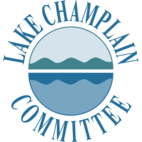What Champlain Didn't See
February 2009

In 1609, four hundred years ago, Samuel de Champlain first set his eyes upon the lake to which he later assigned his name. Last month this column reviewed some of the details from his journal about what he observed on his travel along the lake. It is also of interest to consider what he did not see.
As Champlain arrived on the lake he noted, “These regions, although they are pleasant, are not inhabited by any savages, on account of their wars; but they withdraw as far as possible from the rivers into the interior, in order not to be suddenly surprised.” Though Champlain saw no settlements during his time on the lake, archeological evidence of long-standing settlements along the Winooski and Missisquoi Rivers does exist.
About the time of Champlain’s arrival, there were an estimated 4,000 to 4,200 Abenaki living in the Champlain Valley, a population density that corresponds to less than one person per square mile, according to Christopher Klyza and Stephen Trombulak. However, they state that, as a result of diseases, “within one hundred years of first contact with Europeans, native populations had declined by 90 percent”. Epidemics broke out in 1616 and 1617 and continued sporadically thereafter until 1763. Surprisingly, Klyza and Trombulak suggest that the population in the Champlain Valley may have increased following the epidemics as refugees from Atlantic coast settlements sought safer havens in the less populated interior.
The settlements near the lake would have been fairly easy to overlook even if Champlain had approached more closely. Historian Lee Sultzman describes the habitations as “fairly small, averaging about 100 persons.” Villages were occupied seasonally with inhabitants moving to smaller camps for hunting and gathering for a portion of the year. This habitation pattern made the villages relatively easy to abandon during bellicose periods, such as existed when Champlain was passing through. According to Sultzman, “The Abenaki could just melt away, regroup, and then counterattack. It was an effective strategy in times of war, but it has left the impression that the Abenaki were nomads.”
Additionally, Champlain would not have seen large cropped fields. Agriculture was not widely practiced by the Abenaki along Lake Champlain. Klyza and Trombulak state, “corn, beans, and squash never took on the importance they did in the Connecticut River Valley”. In southern New England, fire was used more extensively to clear fields for agriculture and as a result a higher population density existed there.
Across today’s landscape one can easily find acres of tilled fields and much higher population densities. Both of these changes in land-use have permanently affected the lake Champlain named for himself. Not even the most meticulously maintained farm can hold soil as effectively as the forested landscape that Champlain beheld. All of our farmstead best management practices seek to minimize water quality impacts of agriculture, not actually counteract what has already eroded from them and into the lakes and rivers.
The developed landscape presents an even greater challenge. While farm fields can at least absorb some water, parking lots and roads prevent any percolation into the soil and shed even the smallest rainfall. These changes in hydrology mean increased erosive stream flows immediately following storms and less water available between storms to replenish low flows.
Furthermore, we have laid roads and railroads through the river valleys in modern times, cutting off meander bends and restricting the rivers to straight courses. Without meanders to absorb some of the river’s energy, even more erosion occurs, sending sediment and pollution lakeward and compromising habitat for fish and other wildlife.
Champlain likely could not have imagined the farm fields, villages, and towns we see today and take for granted. As the population of the Champlain Valley increased changes were inevitable. Our lifestyle and settlement patterns demand that we make strong efforts to minimize our ecological impacts, but we can never completely eliminate them. Nor can we reverse the impacts of what has already occurred.
Lake Look is a monthly natural history column produced by the Lake Champlain Committee (LCC). Formed in 1963, LCC is the only bi-state organization solely dedicated to protecting Lake Champlain’s health and accessibility. LCC uses science-based advocacy, education, and collaborative action to protect and restore water quality, safeguard natural habitats, foster stewardship, and ensure recreational access.
Get involved by joining LCC using our website secure form (at www.lakechamplaincommittee.org), or mail your contribution (Lake Champlain Committee, 208 Flynn Avenue - BLDG 3 - STUDIO 3-F, Burlington, VT 05401), or contact us at (802) 658-1414, or lcc@lakechamplaincommittee.org for more information.
